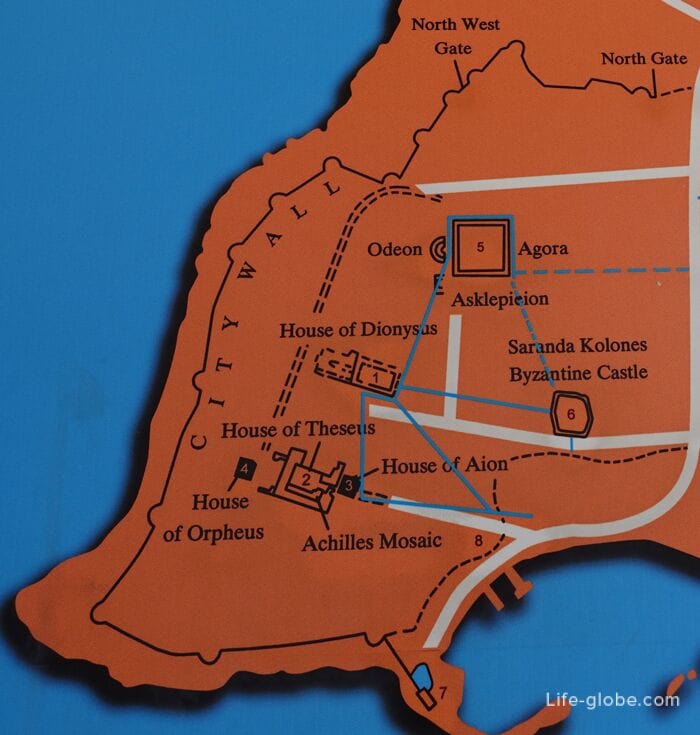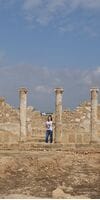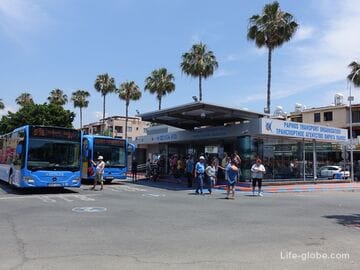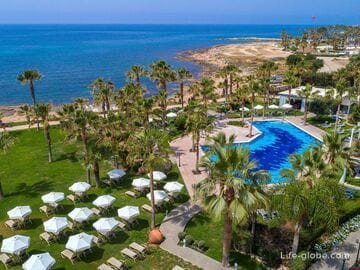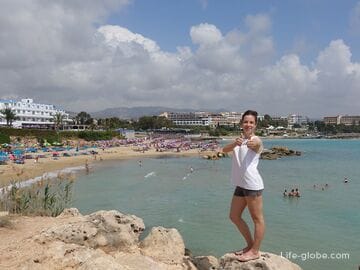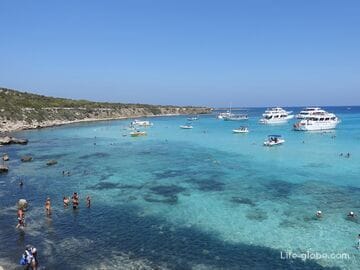Paphos archaeological Park (Πάρκο Αρχαιoλογικό Πάφου) is one of the most important sights of Paphos, which is a site of several eras, located under the open sky in Kato Paphos, near the Harbour and Paphos Medieval castle.
The complex of the Archaeological Park includes the ruins of a castle Forty columns, four villas (House of Dionysos, House of Aion, House of Theseus, House of Orpheus), which preserved mosaic floors, as well as the Agora, the Odeon, the Asclepion and the latest construction of the Park is the lighthouse. Excavations in the Park is underway and is currently.
In 1980, the entire district of Old Paphos, which includes archaeological Park was inscribed on the world heritage List of UNESCO for its outstanding ancient remains.
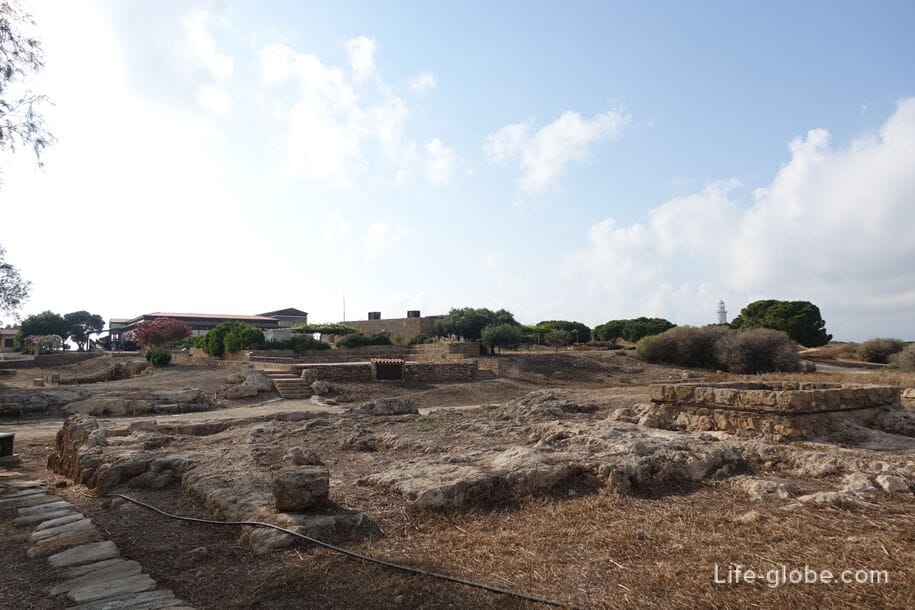
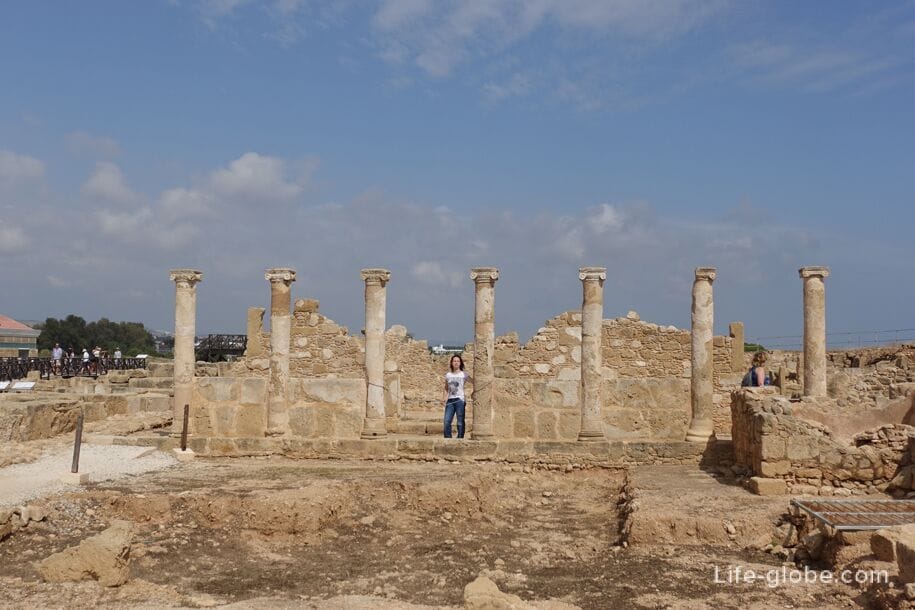
The entrance to the Paphos Archaeological Park
The main entrance to the complex is located near the Harbour, close to the bus station the Harbour. Walking along the waterfront of Kato Paphos pass by this impressive Park, it is simply impossible.
The whole Park complex is surrounded by a fence, from the North-East side was a hole in the fence through which you can also get into the Park absolutely for free.
The main entrance to the complex

Here is the box office. The ticket price: 4,50 € - adult, 2,25 € - those over 65 years. Near the entrance there are toilets. Opening hours Park: 08:30 to 19:30 hours, selling tickets to 19:00 hours.
At the entrance give a map of the archaeological sites of Kato Paphos where, in particular, marked and close to the Archaeological Park.
The time needed for a visit to the Park - at least 2 hours, ideally around 3-4 hours.
Archaeological Park of Paphos
Once inside the Park, opens before us a vast open area and staircase leading upstairs.
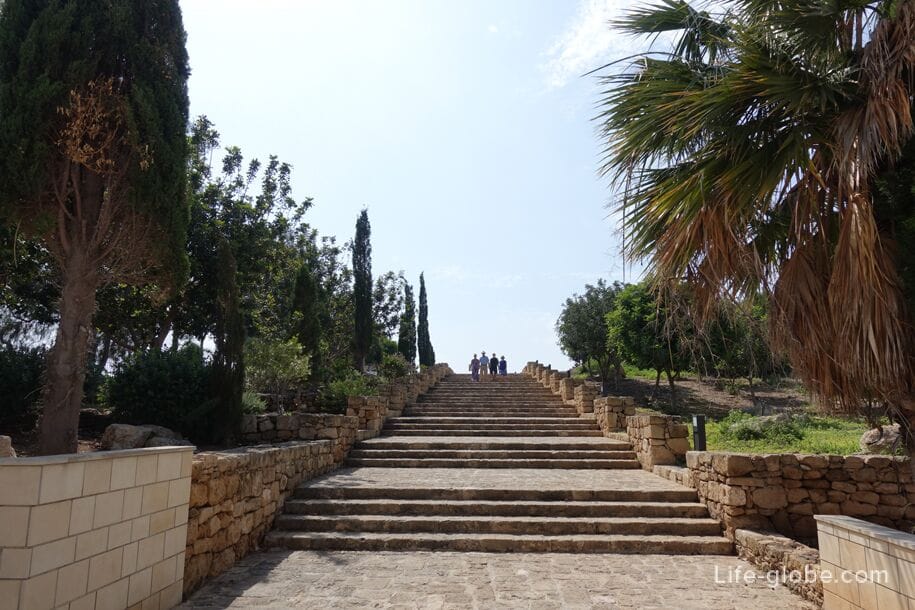
Climbing the stairs is near the visitors ' centre. In the centre selling Souvenirs, also on the screen you can see a documentary about the archaeological excavations.
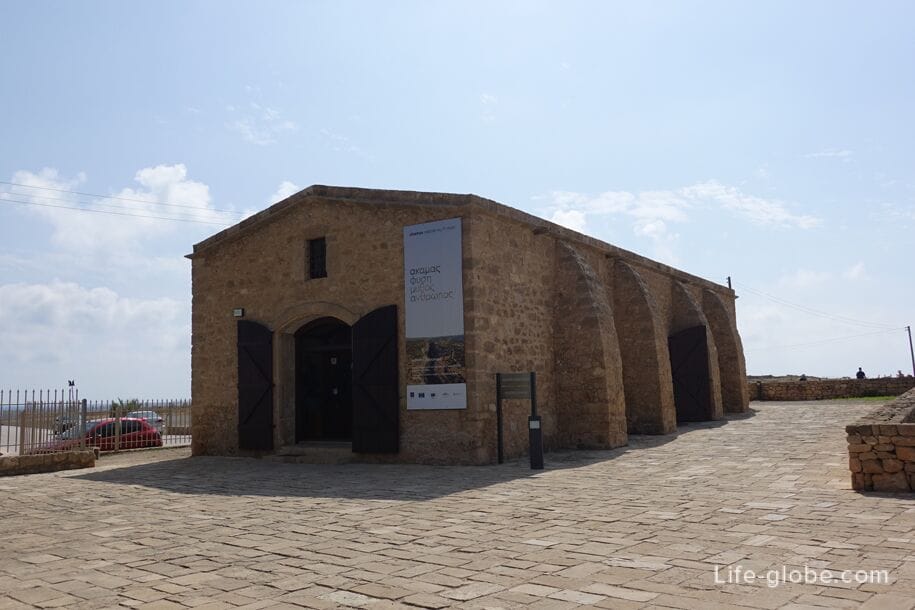
Paths in the Park, mostly covered with small stones, you will need comfortable shoes. Shadows in the Park is very small, so on a hot Sunny day is better to take a hat and drinking water, wear closed clothing, or liberally apply sunscreen to exposed areas of the body. Water in the Park sell only in one place in the machines near the house of Dionysus, at the price of 0.50 Euro per bottle. Here in the machines, you can buy chocolates, chips and other snacks. Chocolate bar 1€, chips, croissants and cookies for € 1.50.
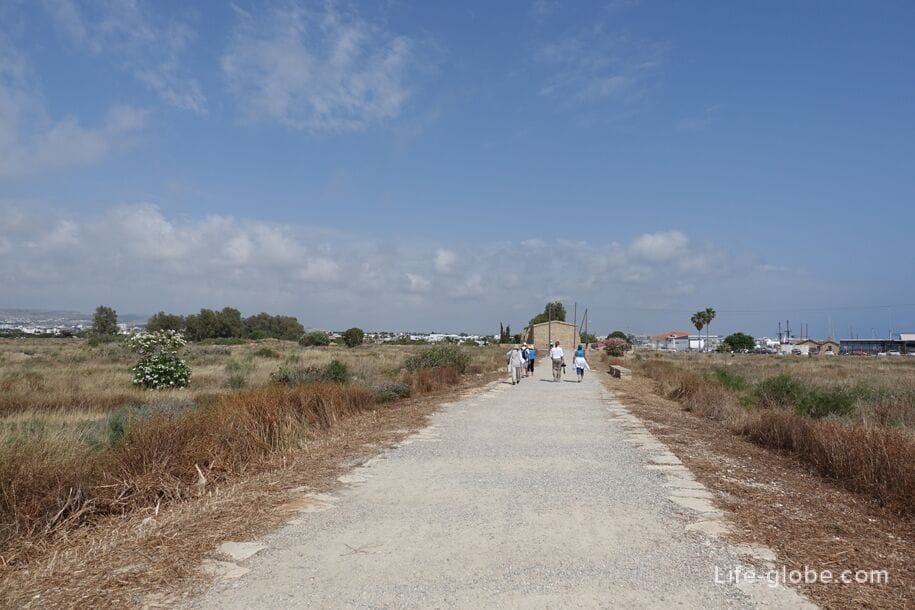

House of Aion
From informcentre, passing through the Park, we get to the house of Aion, part of which is in the room. Once it was a fairly large Villa, currently excavated only three rooms.

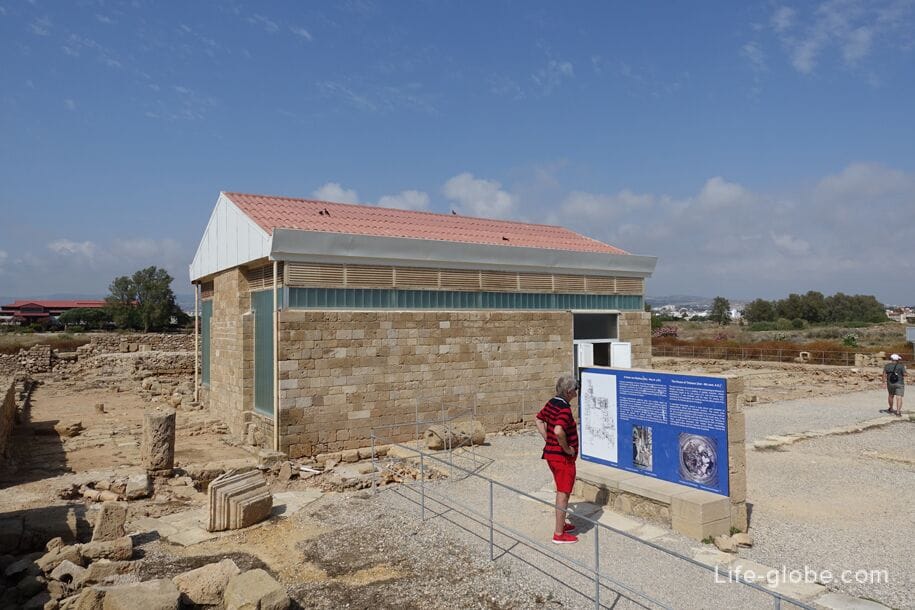
In the building you can see the Central part of the house apparently served as a kind of dining-living room. This place is a mosaic floor made in the form of drawings with scenes from ancient legends and tales.
That is the floor of the House of Aion is one of the most exceptional works of Roman art, if not the only work of its kind in Paphos. This house dates from approximately the middle of the 4th century BC and named in honor of the God, shown in the middle of the mosaic - "House of Aion".

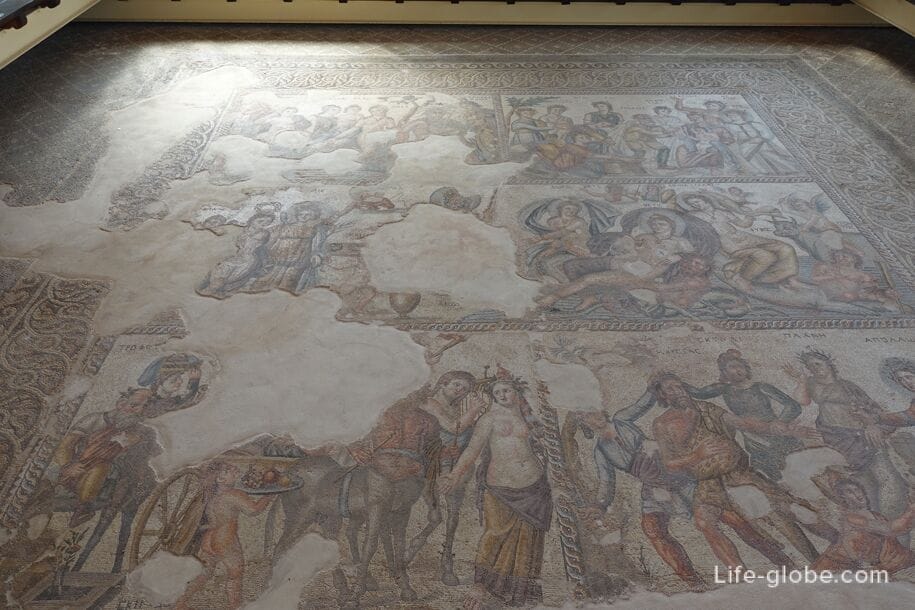
Two rooms had a smaller geometric mosaic with more simple patterns.

The House of Aion is part of the restored walls of the Villa.
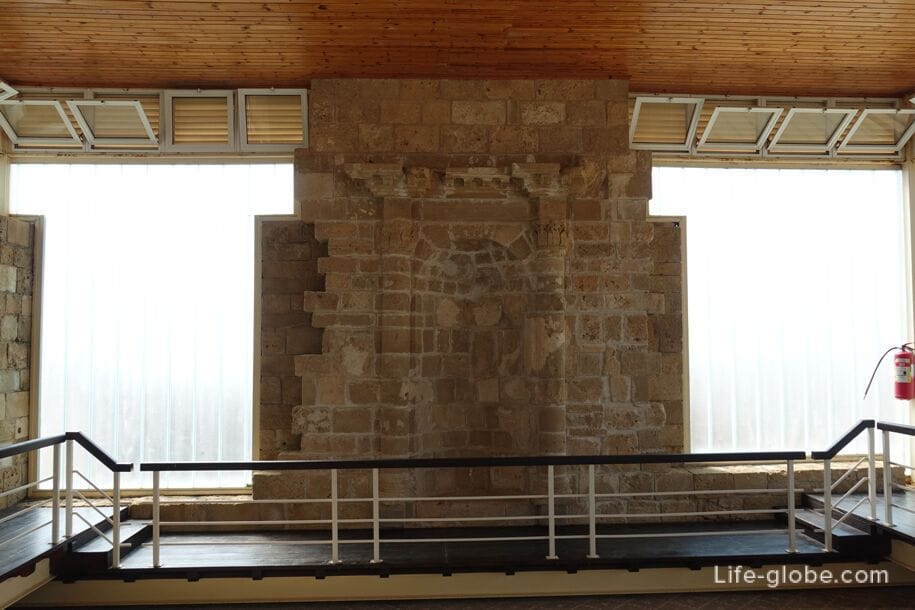
The House of Theseus
Near the house Aion are the remains of the House of Theseus is the largest of the houses the Archaeological Park.
House of Theseus was built in the second half of the 2nd century over the ruins of earlier houses and was used until the 7th century.
Apparently, this Villa was once the residence of the Roman proconsul or Governor. In the center of the building was a courtyard with four sides whose rooms were located, some of which were designed for official functions and the other for private use and utility of the visits.
So far only the southern half of the Villa fully excavated, where you can see the remains of walls and columns and the mosaic.
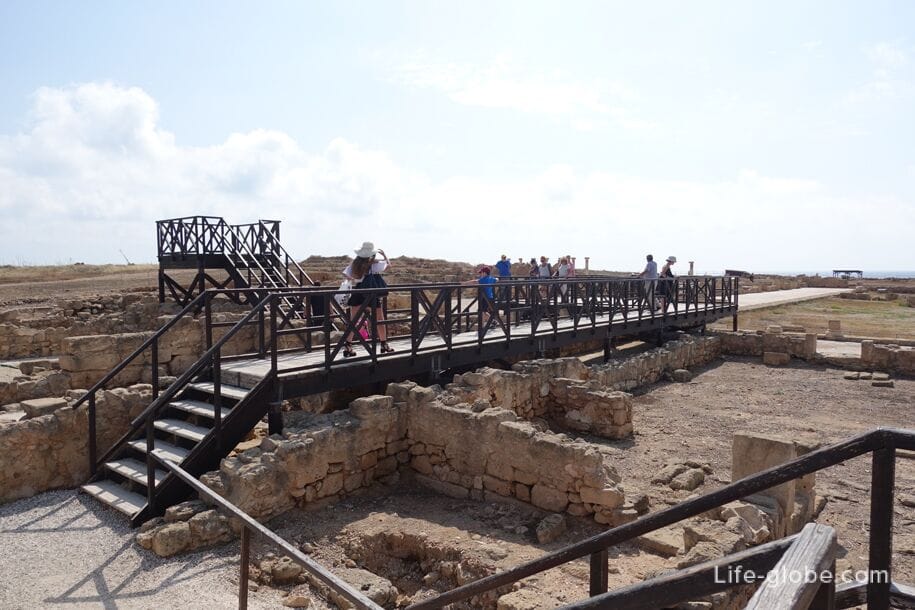
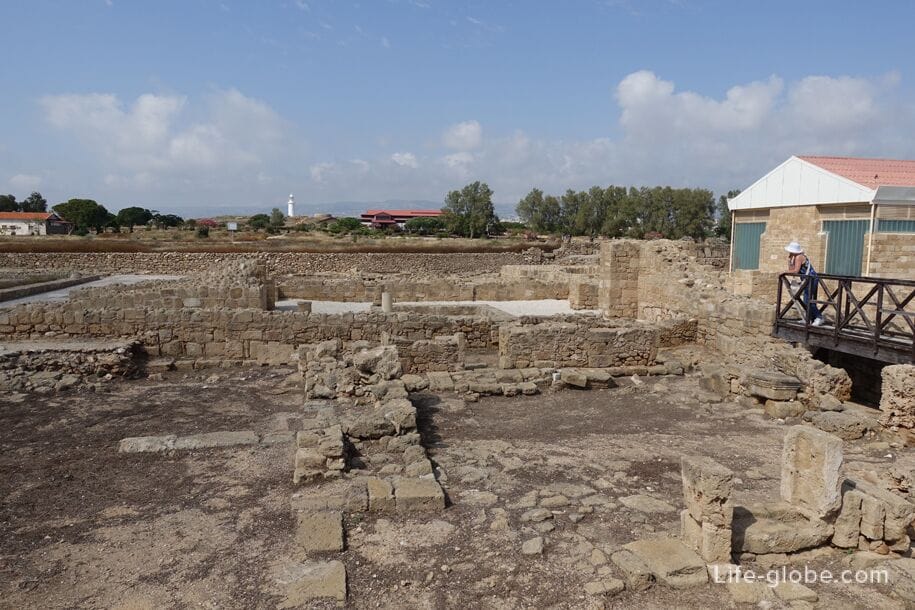
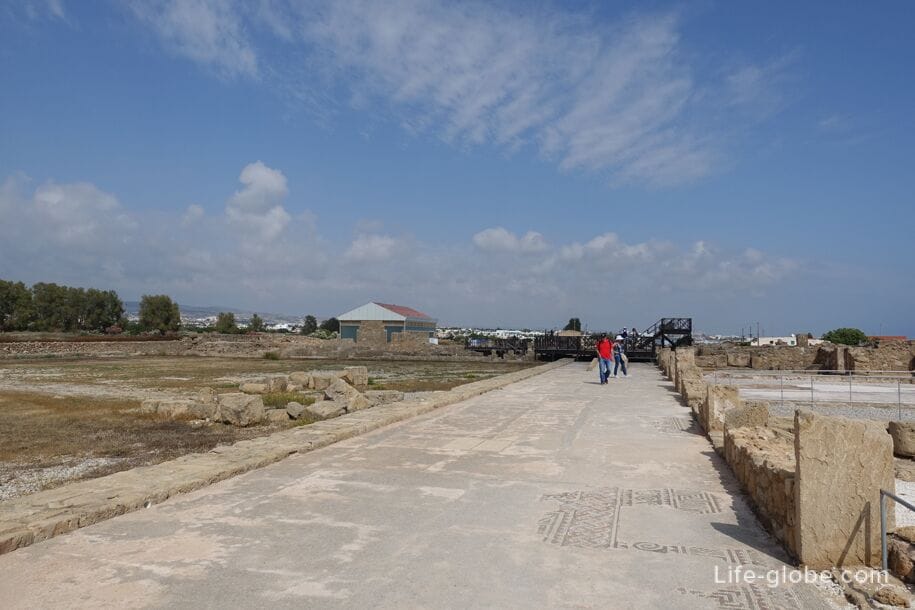
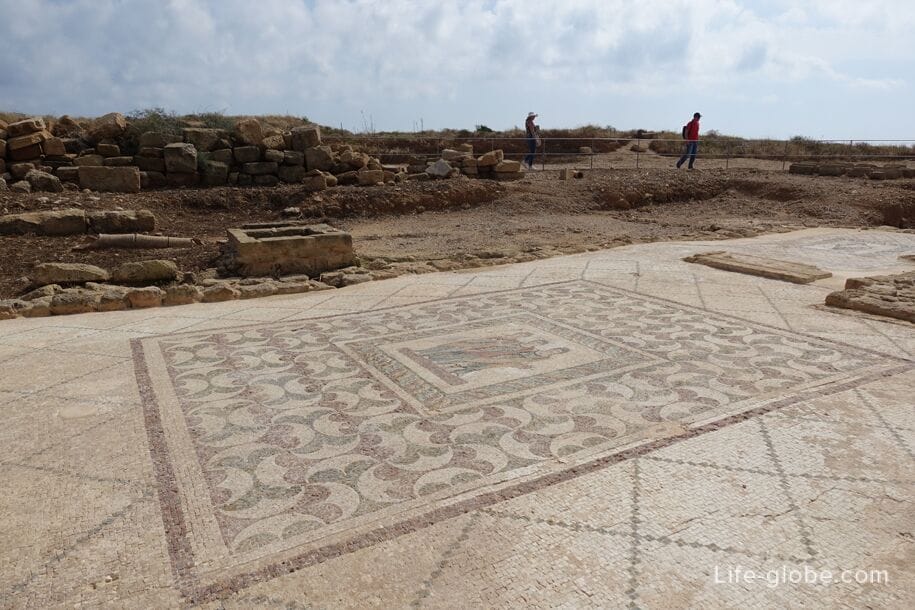
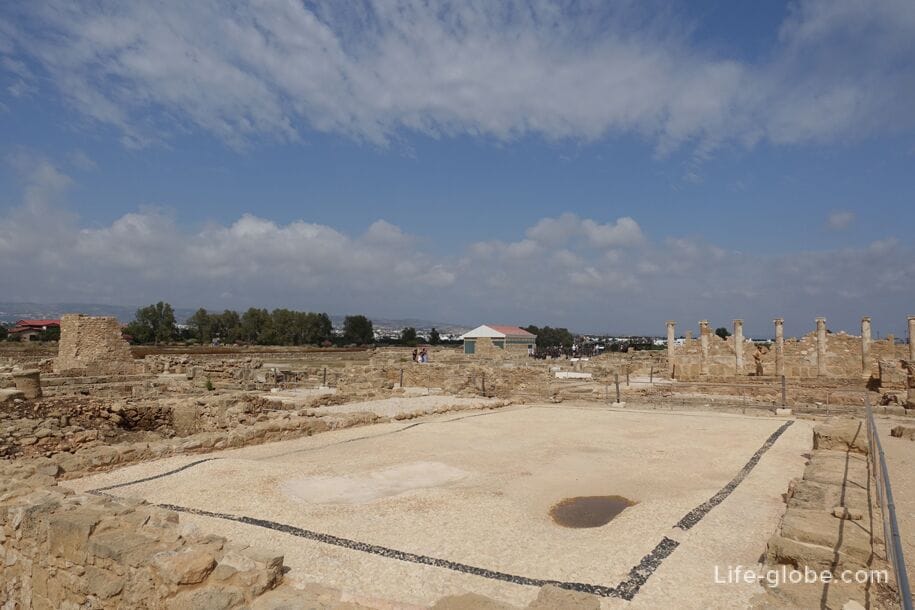

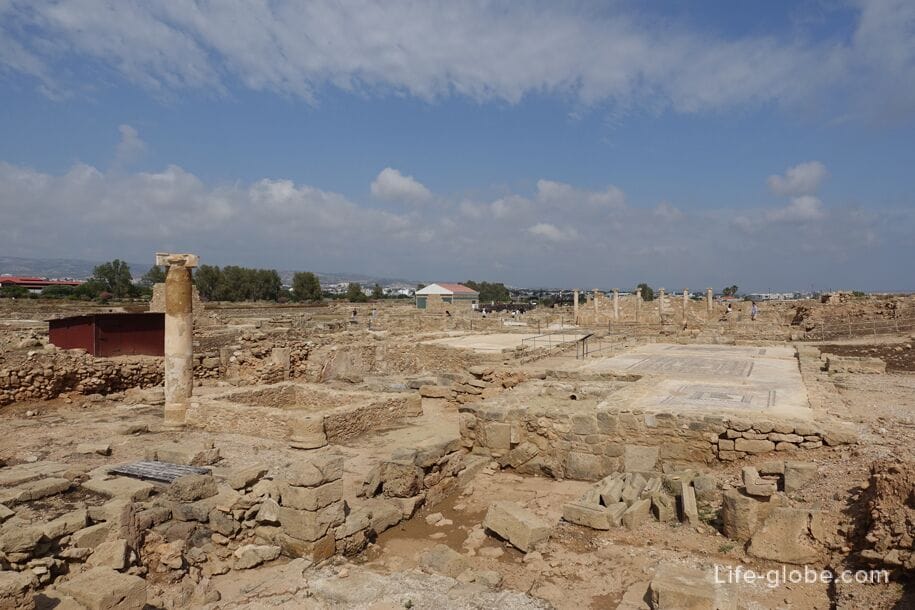
The brightest part of the house of Theseus are the remains of the so-called 36 rooms on the floor where you can see mosaic floors, presumably 3-4 centuries. Thanks to the pictures of this mosaic depicting Theseus and the Minotaur, the Villa got its name - "House of Theseus".
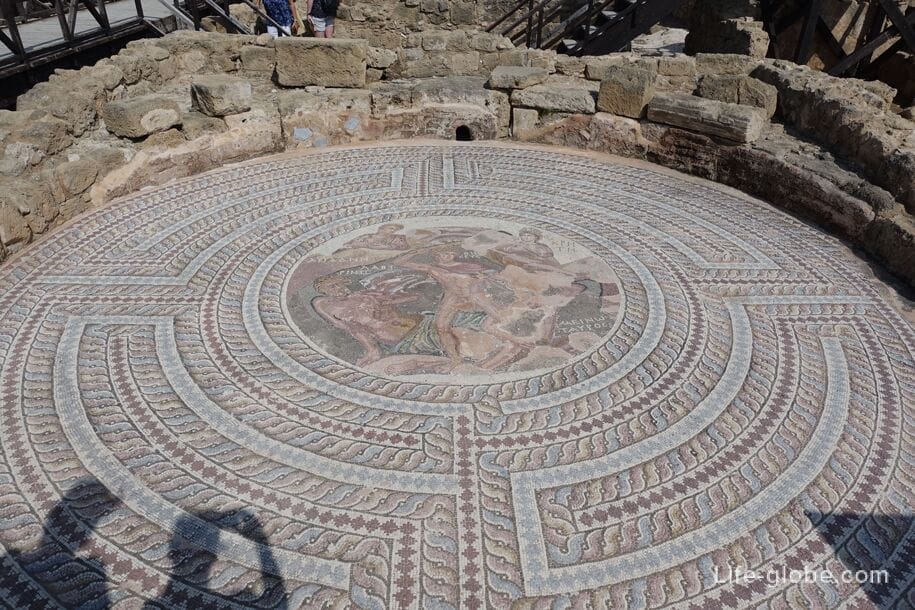
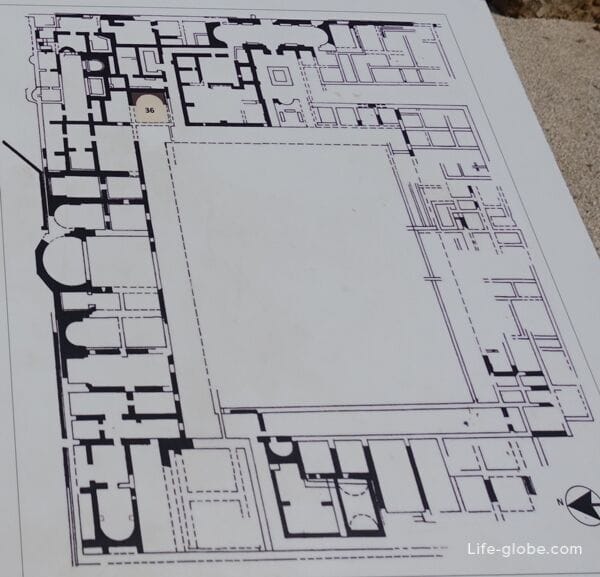
The remains of the mosaic room No. 40
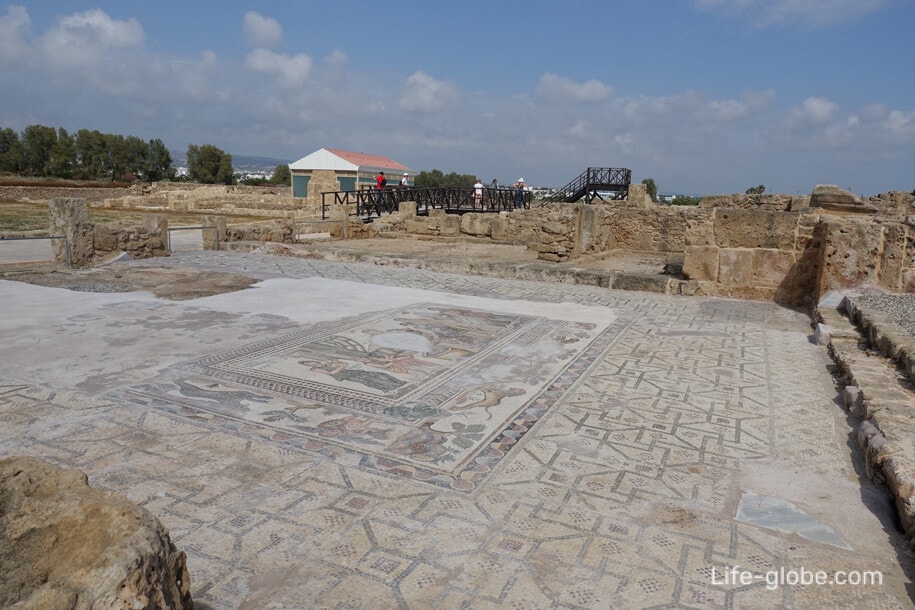

Part of the mosaic room No. 76
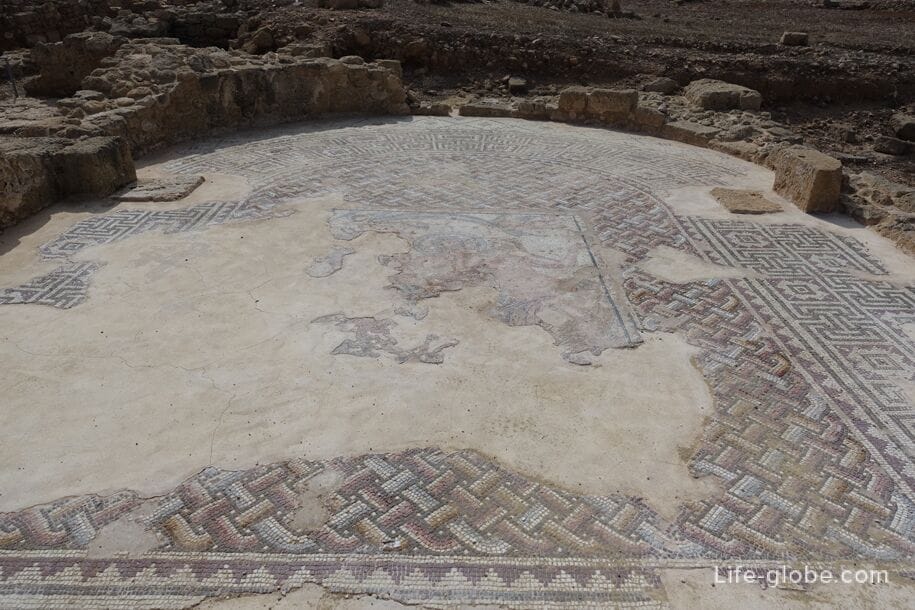
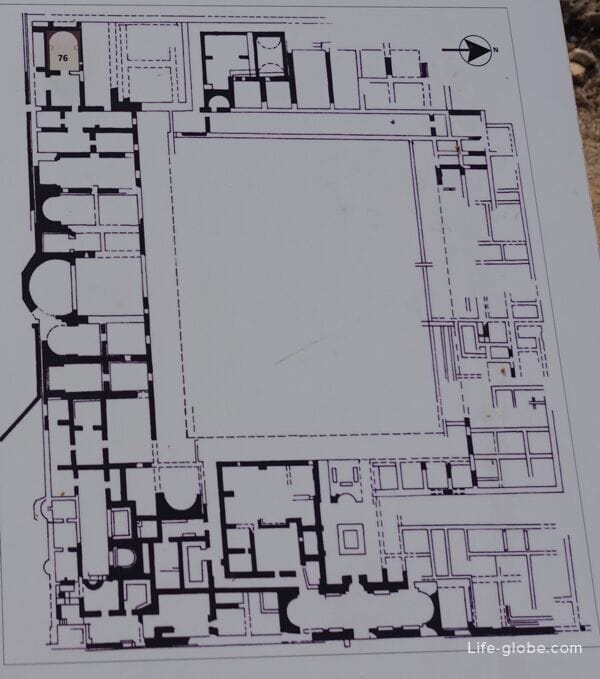
The House of Orpheus
The ruins of the house of Theseus border the ruins of the house of Orpheus.
The House of Orpheus is dated to 2-3 centuries. This is, perhaps, today, the most inconspicuous of the houses of the Park, because in the house you can see only small portions of the ruins of the walls and stones.
As "they say" sources in the house of Orpheus the mosaics of the third century of our era, who have three mythological representations: "Orpheus and his lyre", "Hercules and the lion NEMA" and "Amazon", but currently they are not visible to the public.
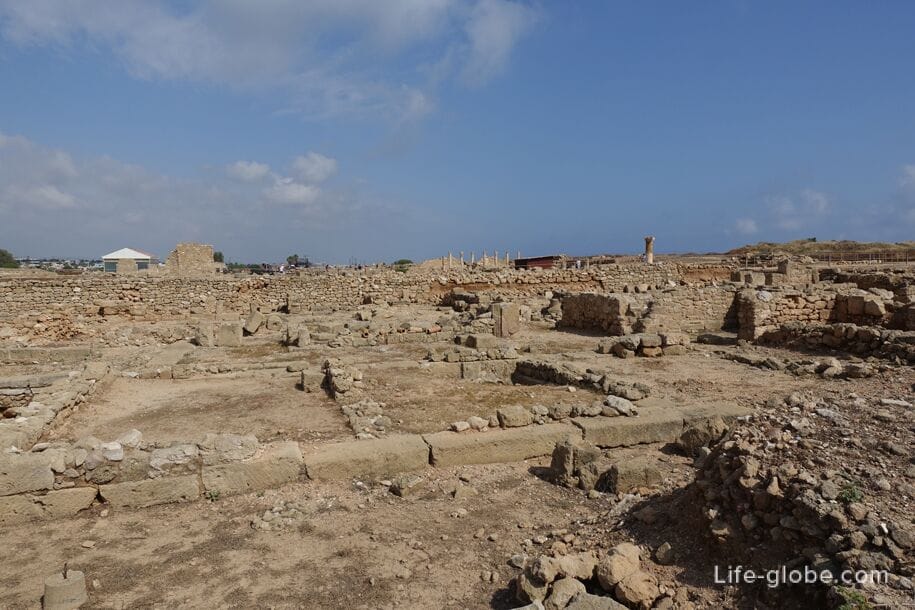
The House of Dionysus
From the house of Orpheus go down the tracks and go out into the alley that leads to the house of Dionysus.
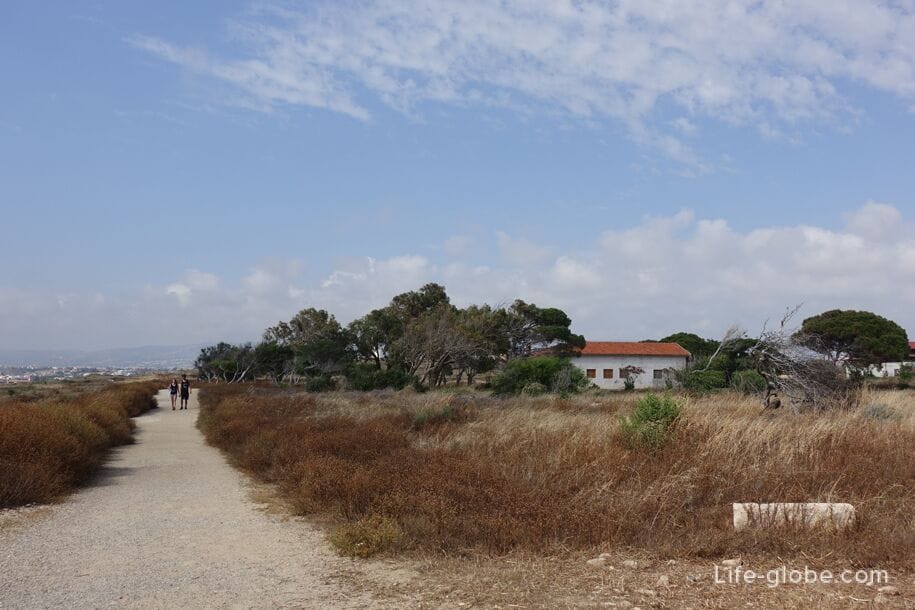

In a small stone building to the right of the closed part of the house of Dionysus, are vending machines with drinks and snacks.
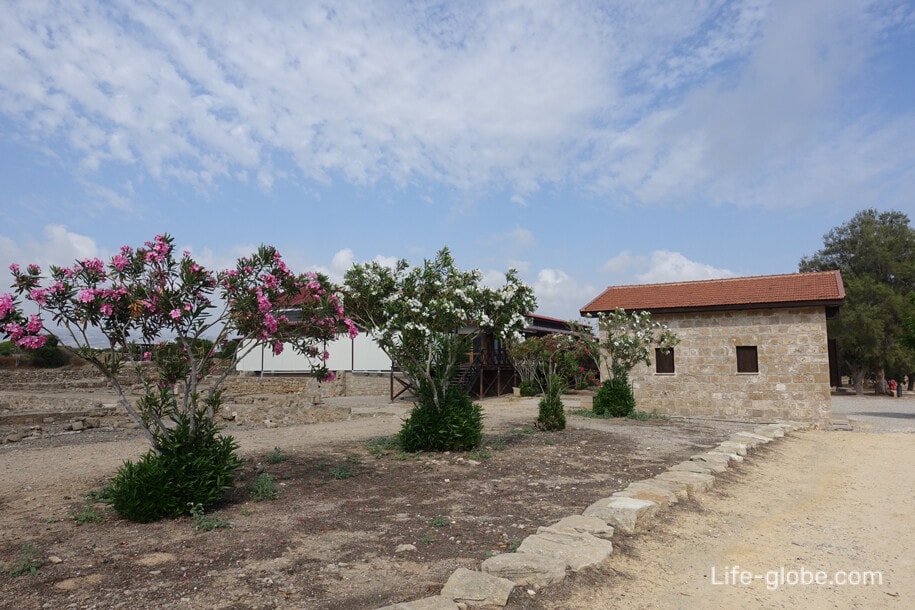
Part of the remains of the House of Dionysos is under the open sky, while the other and the most valuable, the one where the most preserved mosaics located in the closed vicinity. Presumably the house was built in the late 2nd century and was destroyed and abandoned after the earthquakes of the 4th century ad.
Indoors, the house of Dionysos, you can see mosaic floors, presumably 2-3 centuries, decorated with mythological, vintage and hunting scenes. The building is named in honor of the God Dionysus, who is depicted in several mosaics.
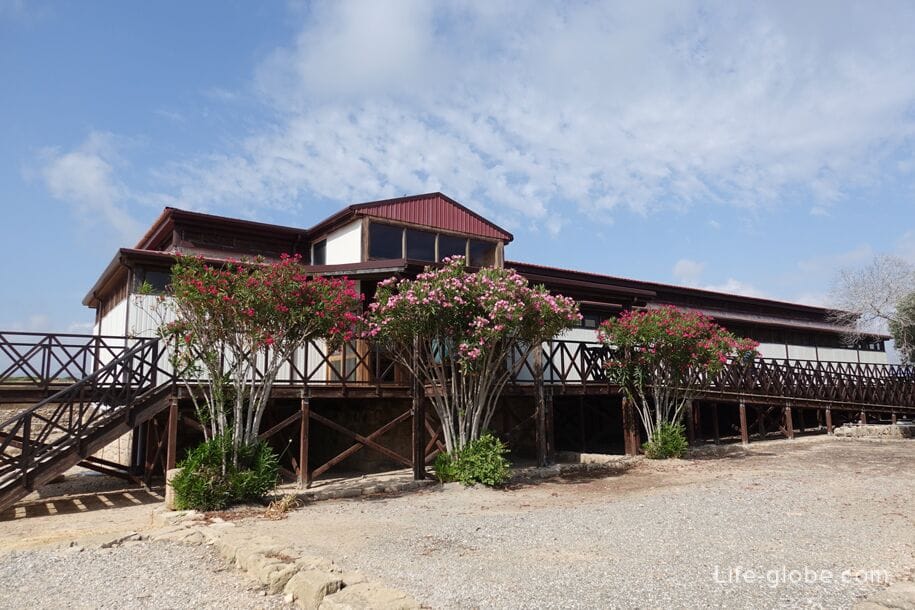
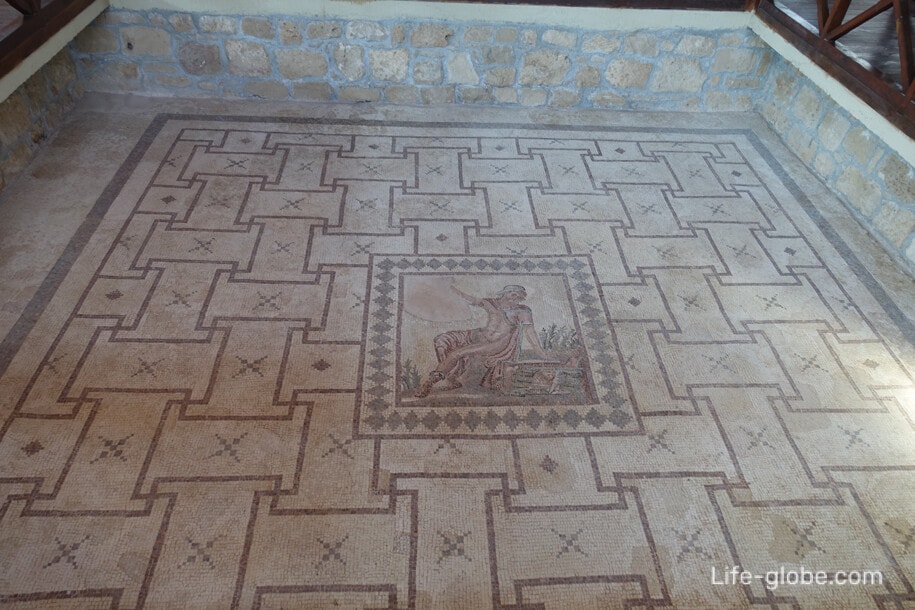
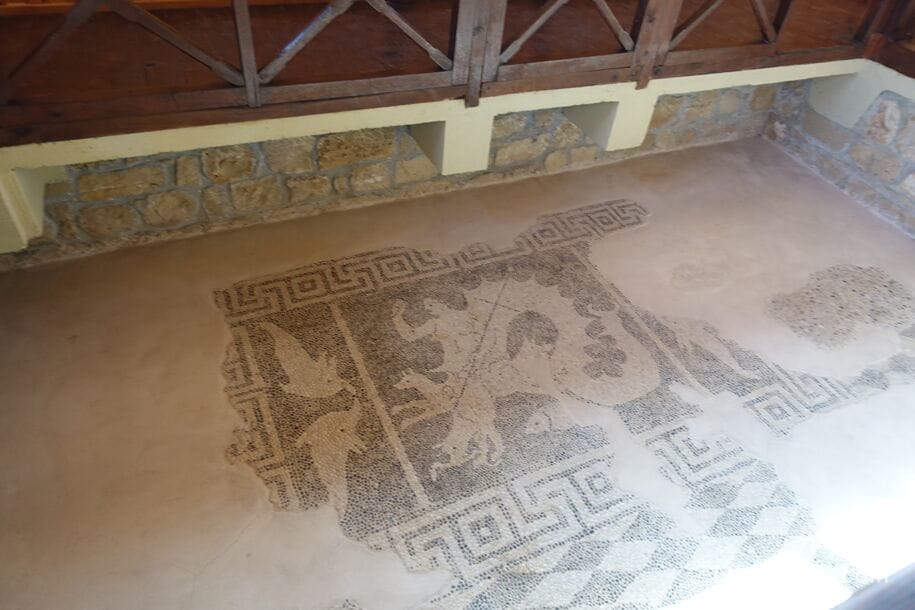


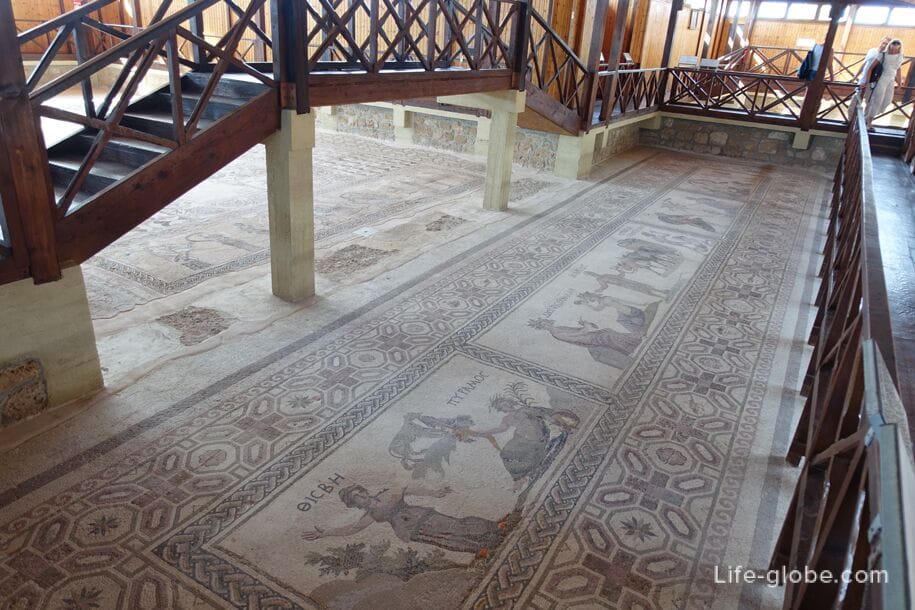


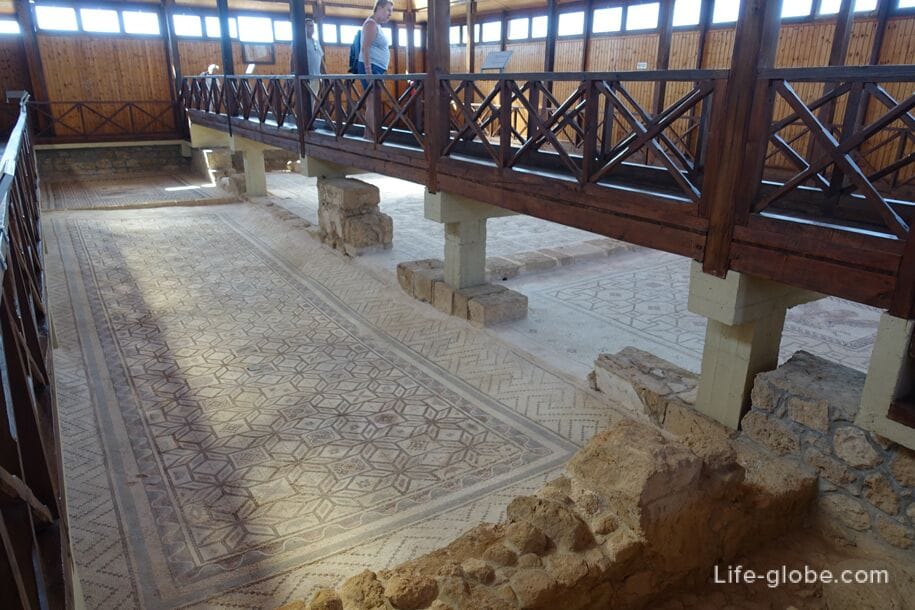
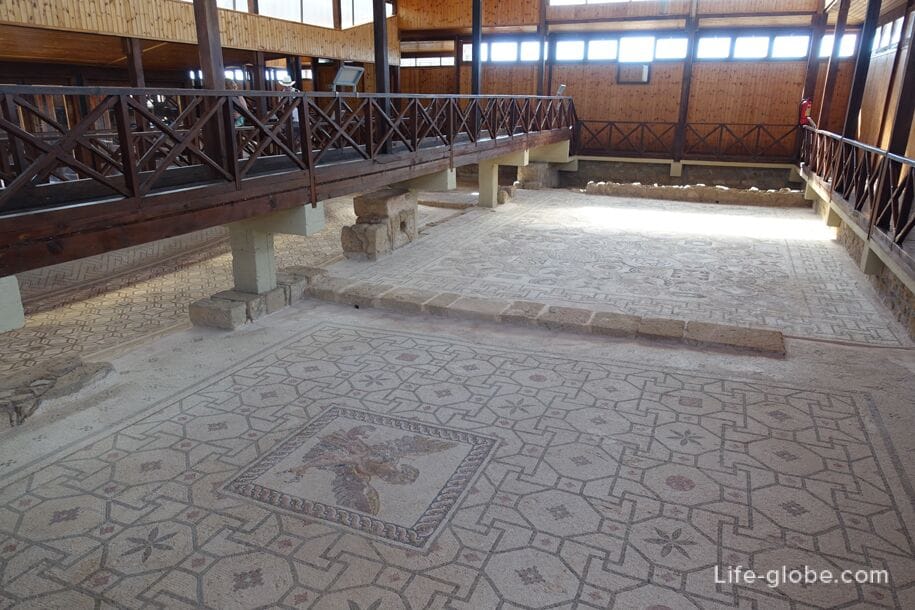
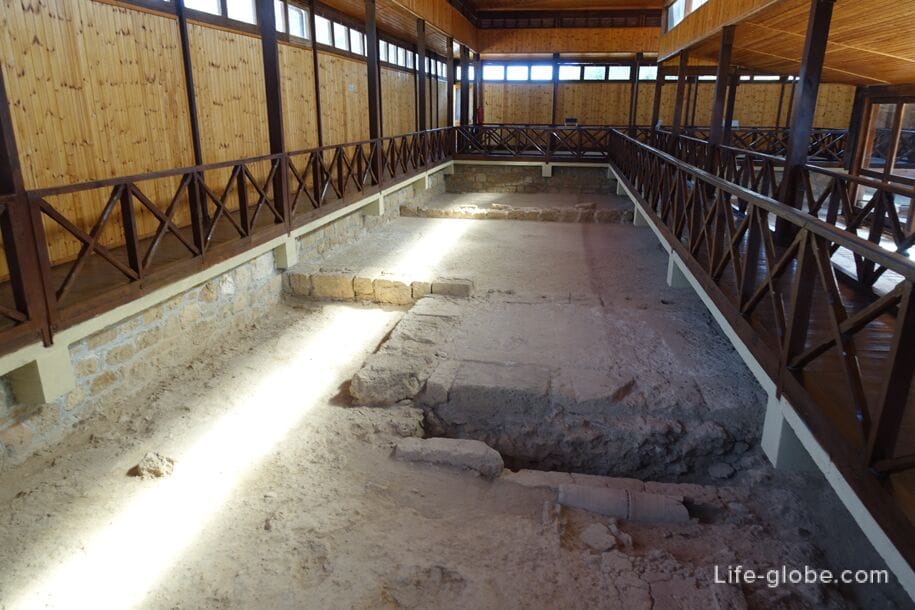
A photo of the remains of the house of Dionysus, located in the open air
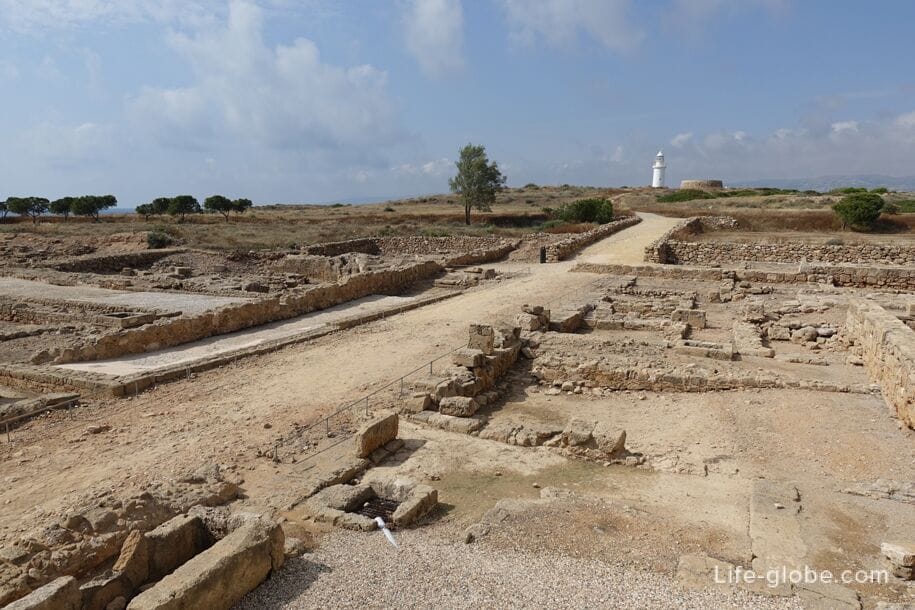
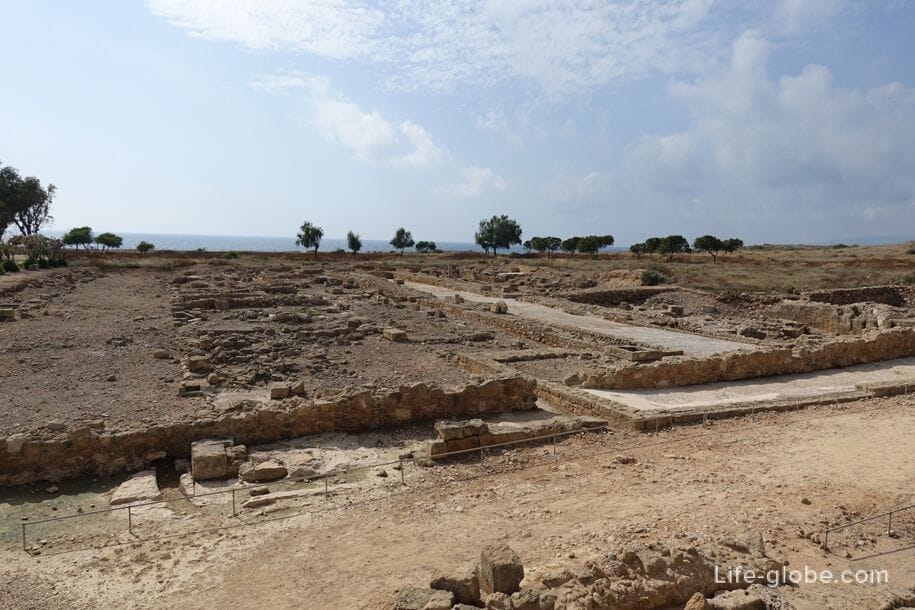
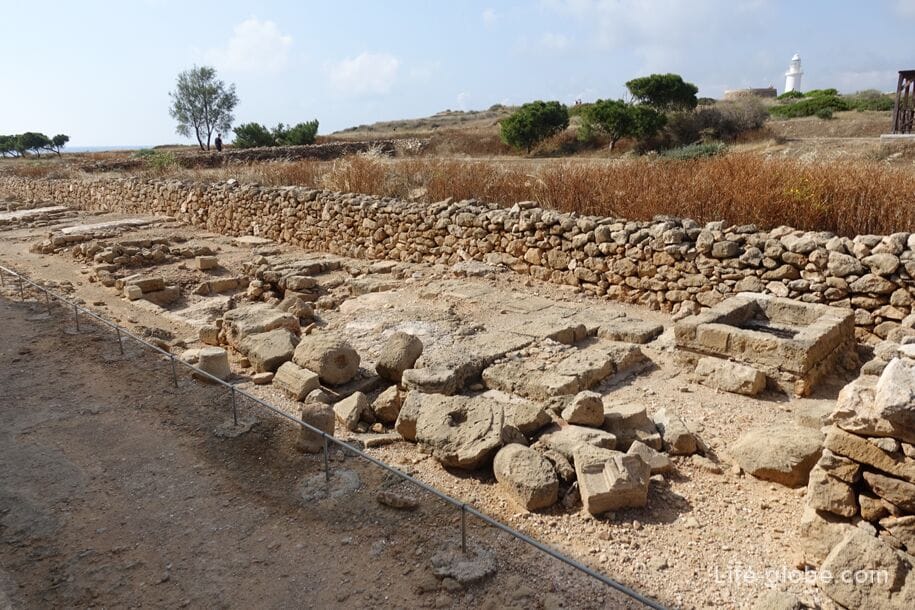
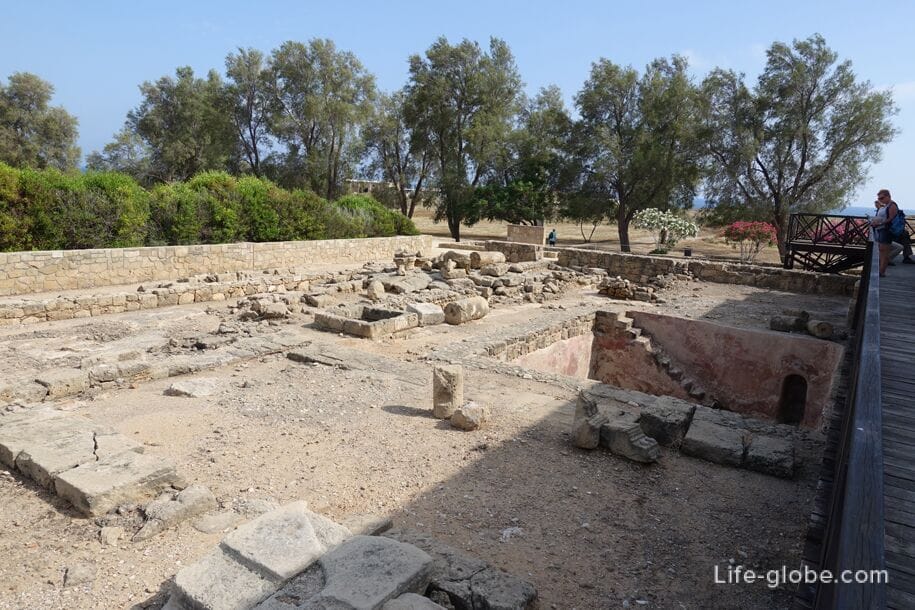
Paphos Lighthouse
Moving North from the house of Dionysus, go to most recent and refurbished attractions of the Park - Paphos lighthouse.


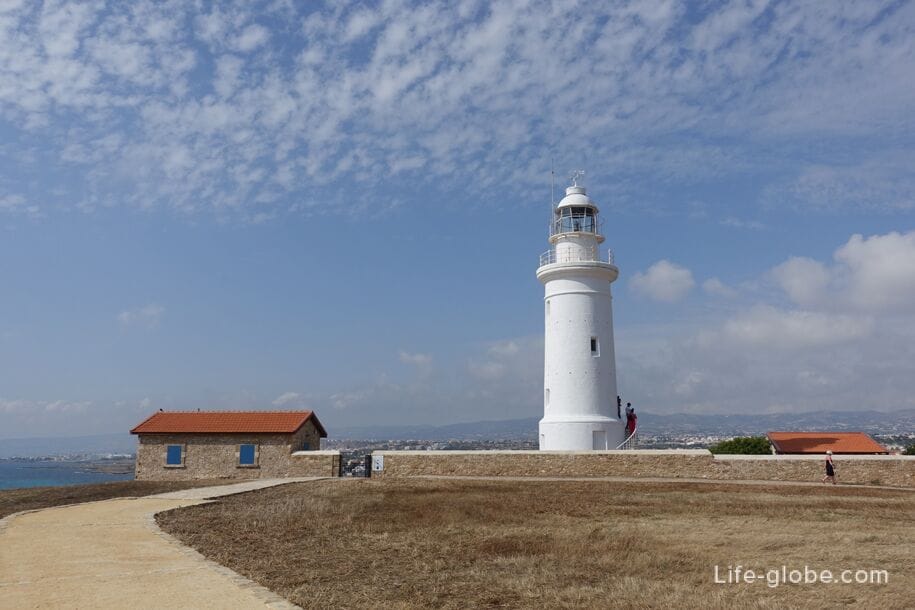
Near the lighthouse there is a small observation deck, which offers views of the Mediterranean sea, the eponymous Faros beach and the surrounding area.


Odeon and Asclepion
Near the lighthouse, a little East, are the remains of the Odeon - amphitheater of the second century, near which are the remains of the temple of Asclepion - in fact, a former medical clinic.
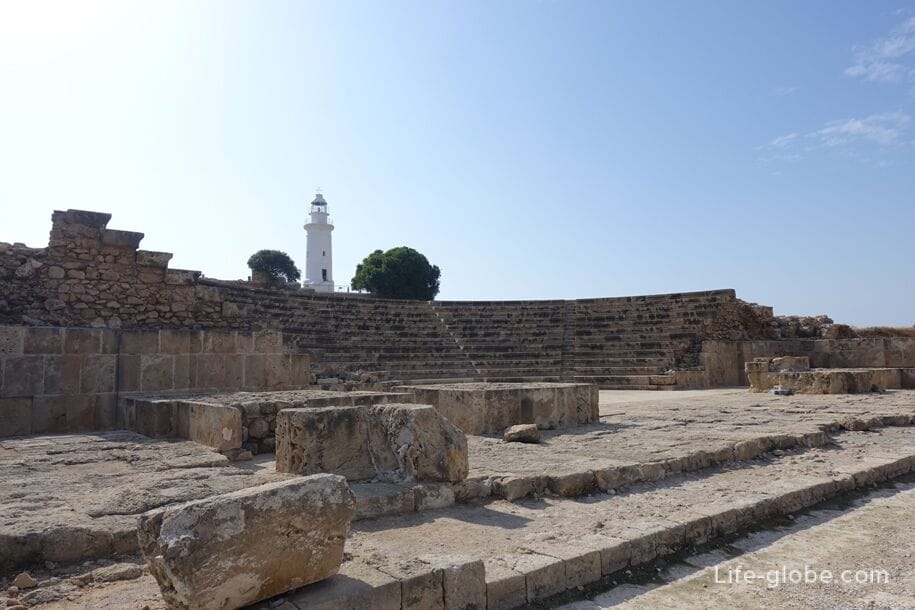
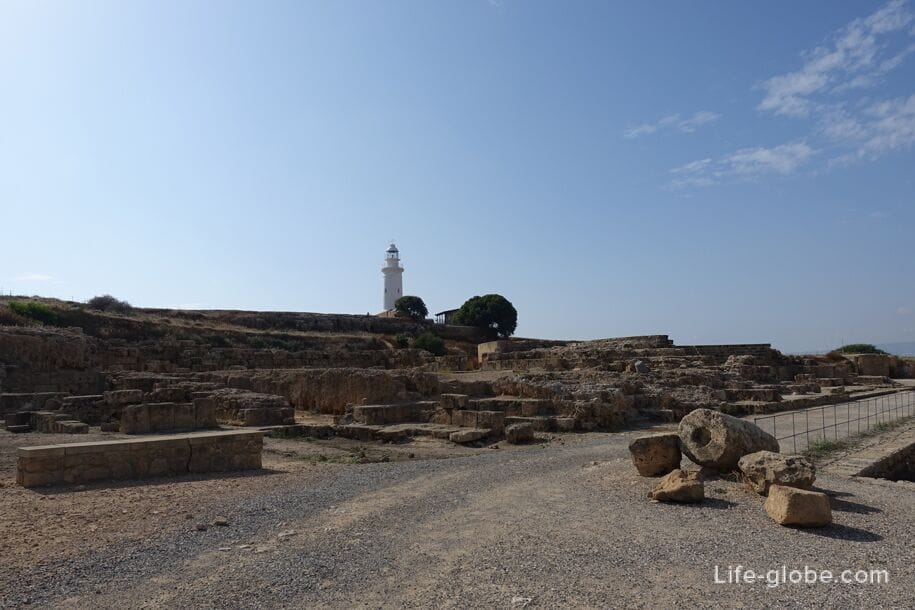
Agora
Opposite the Odeon and the Asclepius, is a desert area with some remnants of is, apparently, the Central part of the Agora or Forum of the city of NEA Paphos is a big town square, having a rectangular shape and lined with stone slabs.
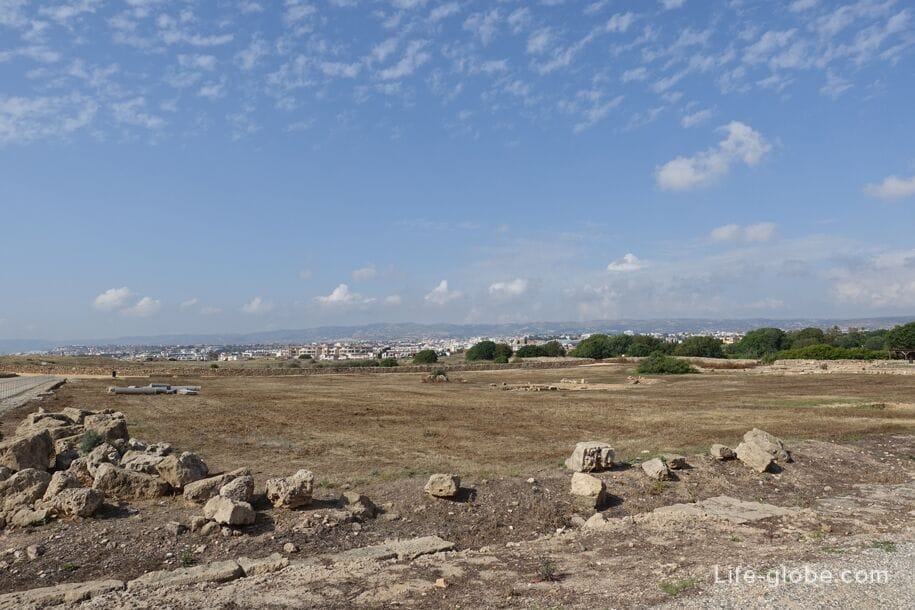
The territory of Paphos Archaeological Park behind the lighthouse
Beyond the lighthouse, on the North side thereof, is a vast area of the Park where excavations have been carried out and are the remains of the underground complex and an early Christian Basilica. Unfortunately, the ruins of a lighthouse, do not have identification marks and understand what they represent - is very difficult.
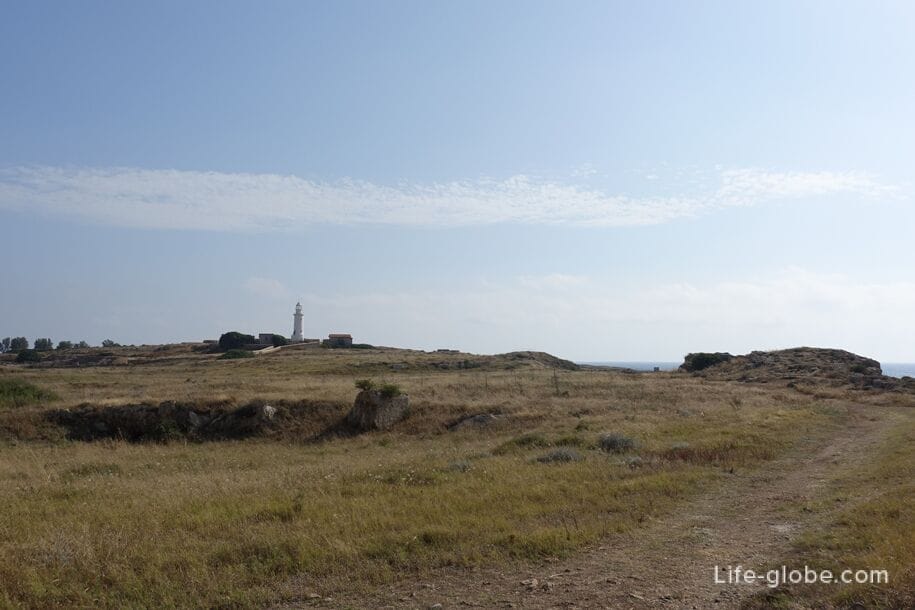





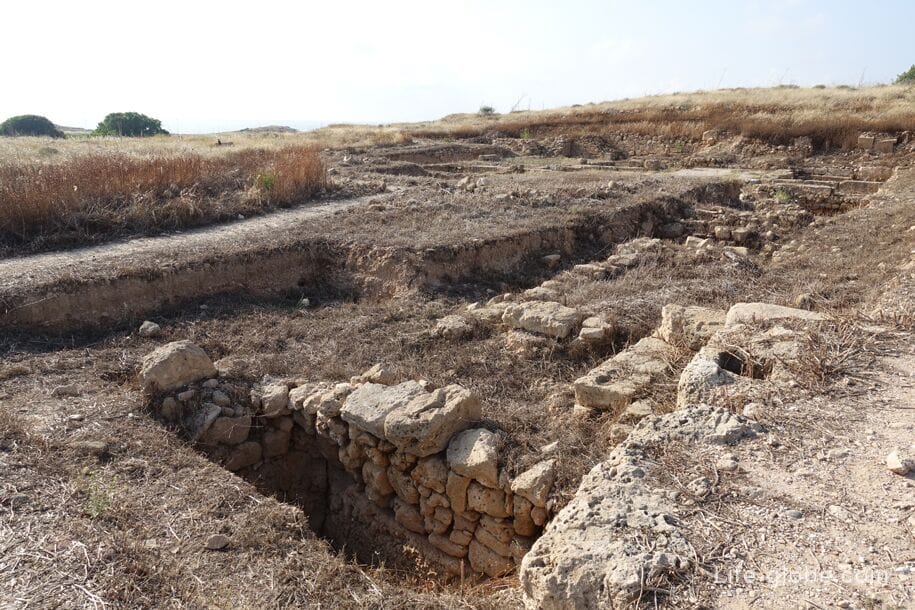
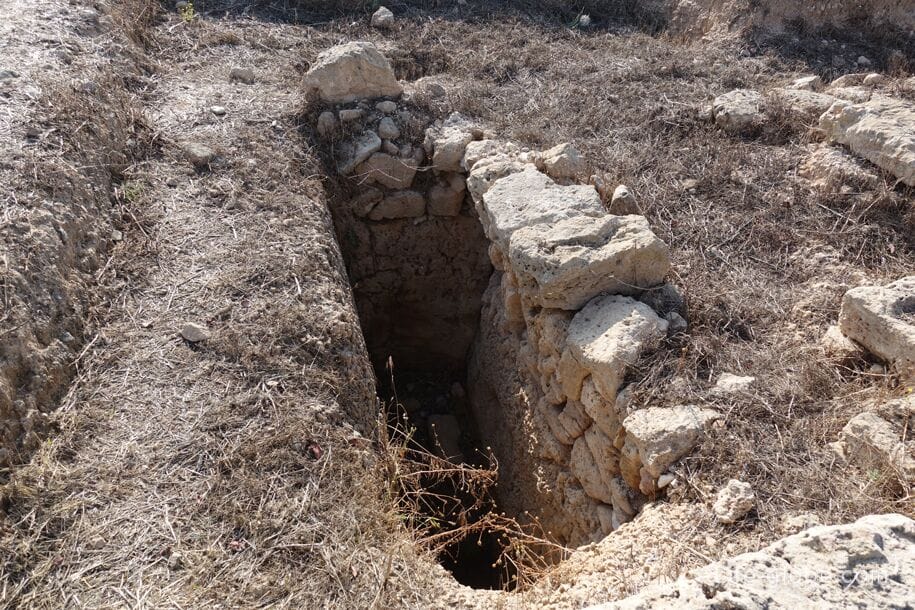
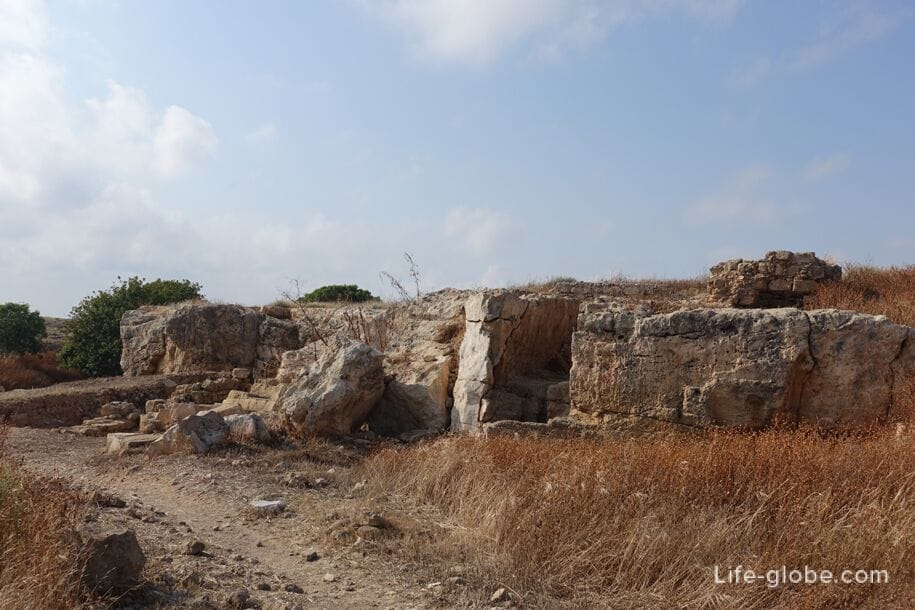
Castle of Forty columns
From the ruins of the Northern part of the Park we are heading to the last of the objects - the ruined castle of Forty columns.
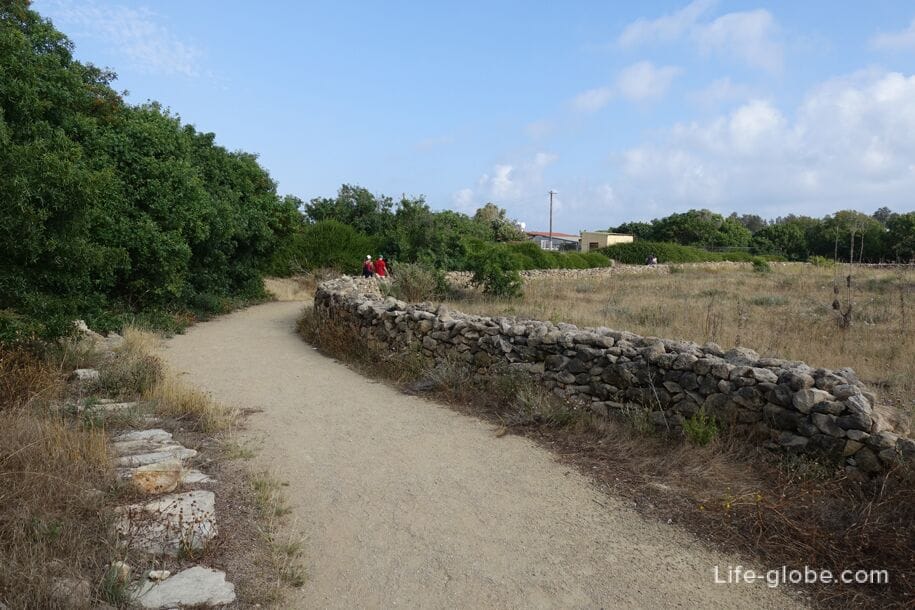
The castle of Forty columns (Saranta Colones Castle), thought to have been erected late in the 7th century as a Byzantine Fort to protect the port and city of NEA Paphos from Arab raids, and then, after the Frankish conquest of Cyprus, somewhere in the 1200's was rebuilt in the castle of Lusignan, which was destroyed by the earthquake of 1223 and never recovered.
The building was a compact fortress surrounded by a massive outer solid wall with eight towers and a moat surrounding the castle. Access to the castle was possible through a wooden bridge passing over the moat.
The name of the castle "Forty columns" comes from the large number of granite columns that were found in this place, they probably were once part of the ancient Agora.
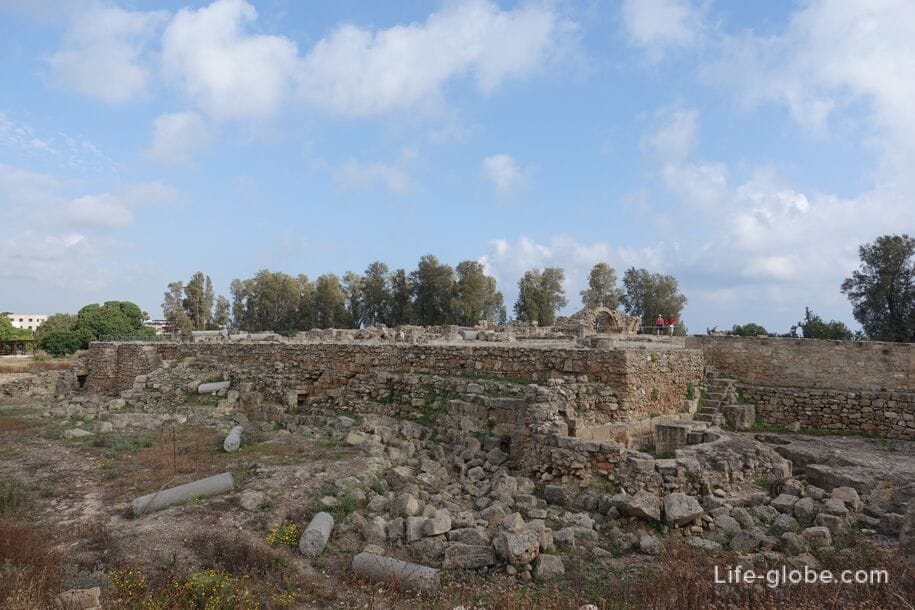
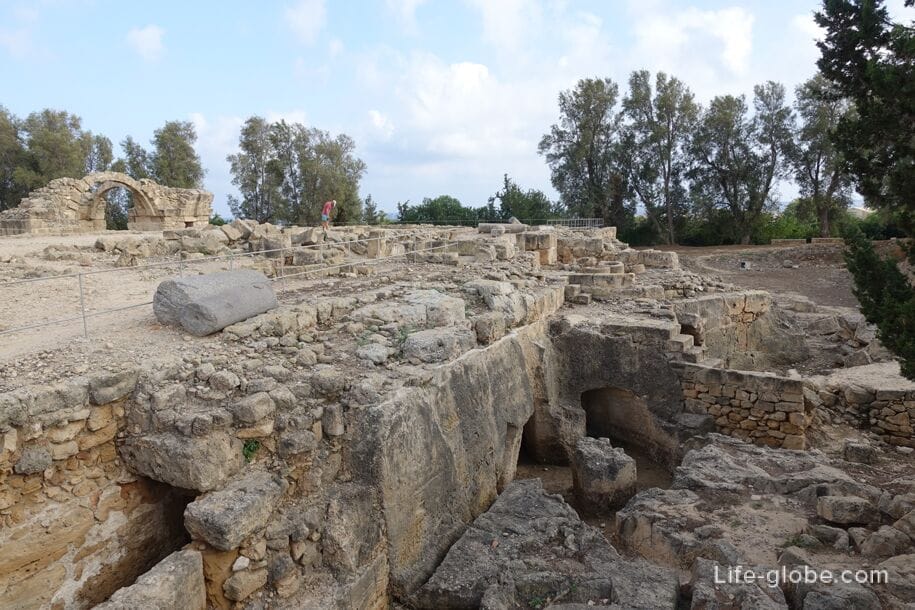
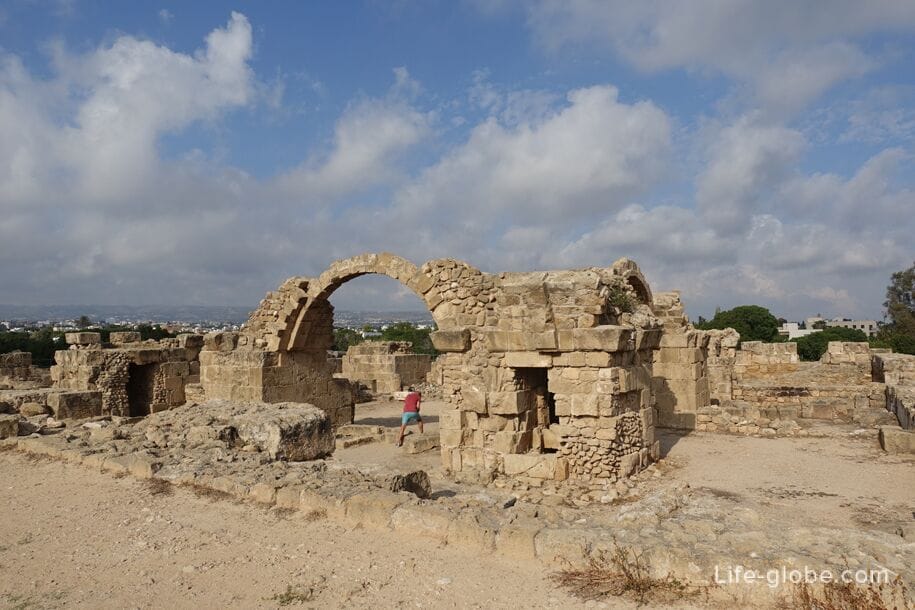
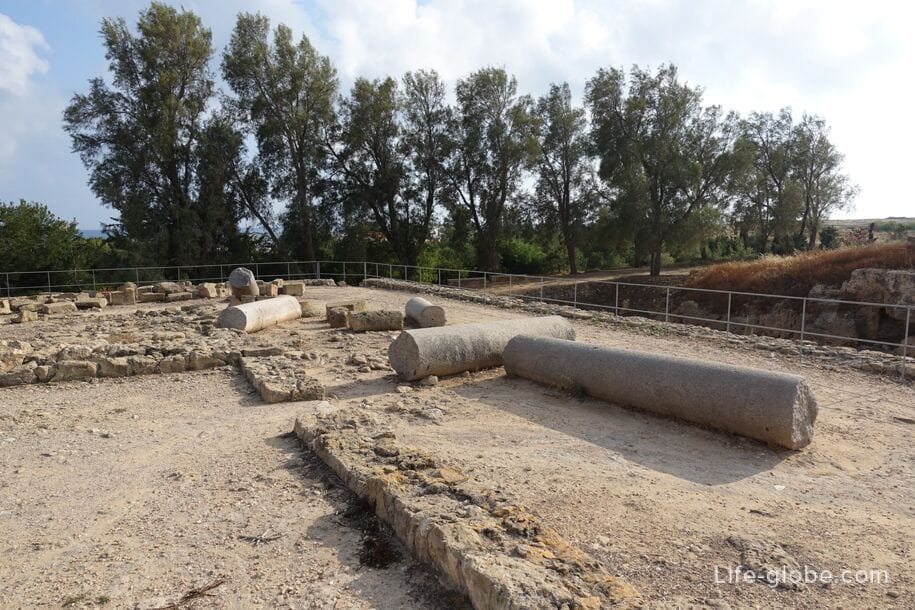

The scheme of the Archaeological Park of Paphos
